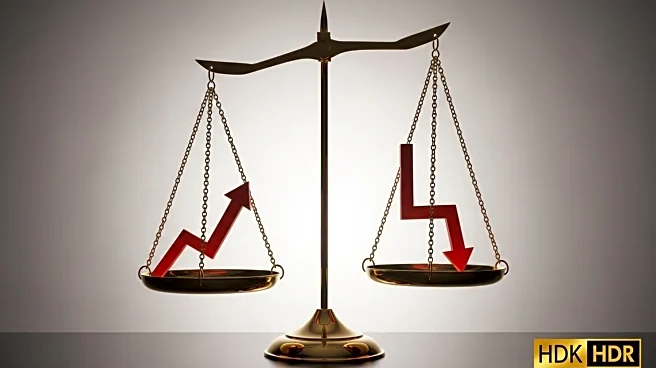What's Happening?
Gold futures have extended their decline following the Federal Reserve's decision to cut its benchmark interest rate by 25 basis points. December gold contracts fell by 0.44% to $3,678.20, while silver futures also retreated. The decline is attributed to investor disappointment over the Fed's cautious approach to monetary easing, which fell short of expectations for a more aggressive rate cut. The U.S. dollar's strength has also contributed to the pressure on precious metals. Despite a sharp decline in initial jobless claims, broader employment trends show a concerning slowdown in job additions.
Why It's Important?
The performance of gold futures reflects investor sentiment and expectations regarding monetary policy and economic conditions. Gold typically benefits from lower interest rates and concerns over currency debasement, but the Fed's measured pace of easing has prompted a reassessment of positions in the safe-haven asset. The decline in gold prices highlights the complex dynamics between monetary policy, currency strength, and market expectations. The broader economic picture, including employment trends, adds to the uncertainty faced by investors in the precious metals market.
What's Next?
Market participants will continue to monitor the Federal Reserve's policy communications and economic indicators for signs of further monetary easing. The central bank's signals of potential additional rate cuts in future meetings may influence investor sentiment and gold prices. Analysts will also watch currency dynamics and employment data to assess the impact on precious metals. The interplay between these factors will shape the outlook for gold and silver futures in the coming months.










